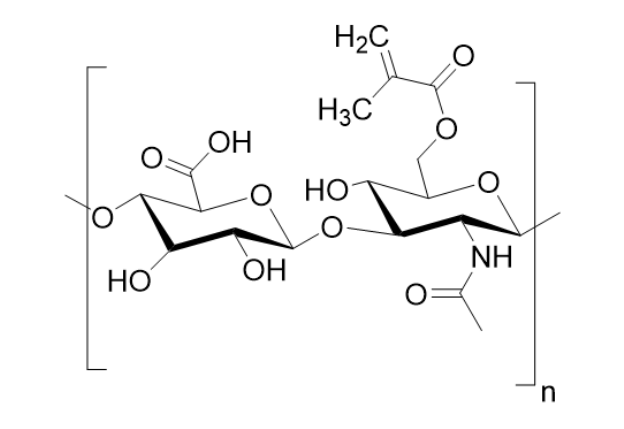Methacrylated hyaluronic acid Powder (HAMA Powder)
Hyaluronic Acid Methacrylate (HAMA) is a chemically modified form of Hyaluronic Acid (HA) where methacrylate groups are attached to the HA molecule. The methacrylate groups enable HA to form hydrogels when exposed to light or chemical cross-linking agents. By adjusting the degree of methacrylation, the mechanical properties, degradation rate, and hydrogel-forming ability can be tuned, making it suitable for various medical and tissue engineering applications, including 3D bioprinting.
Princeton Powder is a leading supplier of Hyaluronic Acid Methacrylate powder in the USA, offering different degrees of methacrylation HA products according to customer’s request.
| Synonyms | HAMA, HAMA Lyophilizate, Methacrylated Hyaluronic Acid, Hyaluronic Acid Methacrylate, MeHA |
| Sterility | Sterile |
| Degree of methacrylation | 40-65% |
| Shelf life | Minimum of 6 months from date of receipt |
| CAS Number | 9067-32-7 |
| Storage conditions | -20˚C, Light sensitive, moisture sensitive |
| Form | Lyophilizate |
Description of hyaluronic acid methacrylate
Methacrylated Hyaluronic Acid (MeHA) is a chemically modified derivative of hyaluronic acid (HA), where methacrylate groups are introduced to the HA backbone. It typically appears as a white to off-white powder or solid. The molecular formula varies based on the degree of methacrylation, but the base HA has the formula (C14H21NO11)n. MeHA is known for forming hydrogels when exposed to UV light or a cross-linking agent, with tunable mechanical properties and degradation rates. It is widely used in biomedical applications such as tissue engineering, drug delivery, and 3D bioprinting.
Application of hyaluronic acid methacrylate
- 3D Bioprinting: HAMA is used in 3D bioprinting to create scaffolds for tissue engineering, as it can mimic the natural extracellular matrix.
- Tissue Engineering: HAMA hydrogels are used to encapsulate cells and provide a supportive environment for tissue regeneration.
- Drug Delivery: Its gel-forming ability allows it to be used in controlled drug release systems.
- Wound Healing: HAMA-based hydrogels can be used for wound dressings due to their ability to promote cell migration and tissue repair.
Hyaluronic acid methacrylate Powder Reference
3D bioprinting of methacrylated hyaluronic acid (MeHA) hydrogel with intrinsic osteogenicity
- In this study, we modified the naturally occurring extracellular matrix glycosaminoglycan hyaluronic acid (HA), in order to yield photo-crosslinkable hydrogels with increased mechanical stiffness and long-term stability, and with minimal decrease in cytocompatibility. Application of these tailor-made methacrylated hyaluronic acid (MeHA) gels for bone tissue engineering and 3D bioprinting was the subject of investigation.

